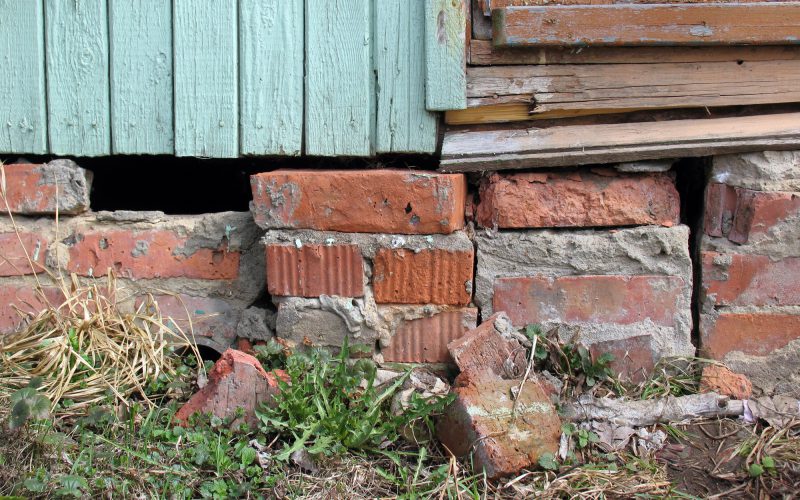
7 House Settling Signs That May Indicate Problems With Your Foundation
The US has a 64.1% home ownership rate as of the second quarter of 2019.
For many of us, our home is our biggest investment. It supports our families, our treasures, and the hustle and bustle we call life.
You may be surprised to know that many homes across the country suffer from foundation problems. Creeks, cracks, and noises are causes for alarm among those who have older homes or new constructions.
House settling occurs in every home. The sound of a home nestling itself into the earth is normal.
Yet is it possible for a home to settle too much? When can signs be explained away, and when is it time to call a professional?
Let’s take a look.
WHAT CAUSES HOUSE SETTLING
All houses settle after they are completed. Buildings usually bed down after construction and the process can continue for up to ten years after completion.
With a uniform settlement, your house will settle down evenly at all four corners without tilting. You may hear joints and floorboards creaking, but no damage is occurring.
One of the most common reasons why homes settle improperly is backfilled soil. If too much soil is dug out for the basement, it must get backfilled.
In these cases, the soil that gets used to fill has not been naturally settled. It needs to be properly tampered down. If this gets done incorrectly, your house will not settle properly.
Another common cause of improper settling is a tree growing too close to the house. It may cause disrupted soil compaction while it is looking for water. A tree may also invite rainwater to draw underneath your house.
You also need to be mindful of the type of foundation you build. Most homes get built on concrete over steel, and all concrete will crack to some degree.
Clay foundations, however, will expand and contract, depending upon the amount of water they get exposed to. When there is an abnormal amount of rain in your area, followed by a drought, a clay foundation may begin to falter.
When foundation damage is minor, you will only notice a few cracks here and there. Major damage, however, can affect the rest of your home. Your pipes may burst or your sewer lines could separate.
If anything gets buried under your house, the broken pieces will eventually disintegrate and create pockets. This can cause foundational upheaval.
The cost of repairing foundational damage can add up. It may even require permits or engineers. If you notice signs of foundational damage, it is best to mitigate the problem right away.
1. CRACKS IN THE FOUNDATION
Check out your foundation and look for horizontal cracks. This is a sign of hydro-static pressure building up around the foundation.
2. WATER IN THE BASEMENT
Go to your basement after it rains and look to see if water has seeped in. Or better still, use a flashlight in your basement during a rainstorm to find out where the water is coming from. Seepage in your basement is a sign that your foundation has gotten compromised.
3. CRACKED WALLS
Look for cracks in the drywall or plaster of your walls. In particular, cracks will be in your drywall or plaster. Jagged cracks around windows and doors at a forty-five-degree angle is a sure sign that your foundation is shifting so much that it is tearing your sheet rock apart.
Your basement walls may crack, lean, or bow if your foundation is damaged. The floor may slope.
4. STICKING DOORS AND WINDOWS
If you have other signs of foundational damage, you may notice that your doors and windows stick when you open and close them. This happens because the frame twists out of place as the foundation moves. It is best to call a professional right away.
5. SLOPING FLOORS
Your uneven or sloping floors are a sure sign that something has moved because most houses are level when they are built.
6. ISSUES WITH THE ROOF
Contrary to what instinct may tell you, you may first notice issues toward the top of the house.
Cracks or gaps in your roof are indications of a foundational problem.
7. SLOPE CREEP
If your home is built on a slope or hillside, you may incur foundational damage due to the soil slowly shifting downhill. This happens over a period of years.
Signs to look for with slope creep include sloping floors, foundational cracks, and drywall cracks.
REPAIRING THE PROBLEM
Foundational issues require a number of steps to mitigate. When you are ready to call a professional, you will hear about a few things they can do to help stabilize your home.
Professionals will likely put pilings under the ground around your entire foundation. This will give your home a firm footing.
A professional may also dig tunnels around your home to access the interior foundation beams. Foundation pilings get placed under your beams.
Hydraulic jacks go inside the tunnels. Support cylinders are then placed under the beams. These raise your beams to the proper height.
After your home has gotten lifted, tunnel entrances get closed. They will remain intact to allow for any future plumbing repair or piling adjustments.
Landscaping gets put back in place, and your home rests on a solid foundation! Remember that you can prevent damage to your entire property by getting any suspected foundational damage repaired right away.
A FIRM FOUNDATION
House settling is perfectly normal. If, however, cracks, bowed ceilings, or sticking doorways have you worried, the best thing you can do is get to get a professional to take a look at your foundation.
For more information, request a quote today.
